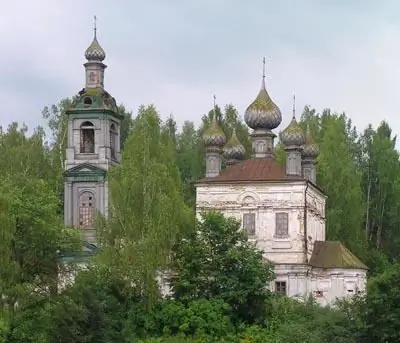- Author Harold Hamphrey [email protected].
- Public 2023-12-17 10:06.
- Last modified 2025-01-24 11:10.
Ghent (Belgium), the photo of which is presented below, is the third largest city in the state. According to historical information, it was founded in the ninth century. Since that time, it has experienced far from one economic ups and downs, turning into one of the most important industrial centers of the country today. In the local traditions and numerous ancient monuments, the memory of the old days of power and glory is carefully preserved. It is not surprising that local attractions attract crowds of tourists every year, most of whom are happy to return here at least once again.

A Brief History
As noted above, the city of Ghent was founded in the ninth century. Belgium at that time was the object of constant attacks. In this regard, Count Baudouin I founded a fortress here, which was supposed to protect local abbeys from Viking raids. Some time later, villages appeared around it. In the 11th century, Ghent became the center of the region. The textile industry, handicraft and lace production flourished here. The era of greatestdawn and economic power for the city was the period of the XIV-XV centuries. In 1817, with the support of King William I, a university appeared here. Another 10 years later, the Ghent-Trenezensky Canal was laid, through which the city is connected to the North Sea. This, in turn, contributed to the emergence of the port and led to the rapid further economic growth of the entire region. Today, its annual turnover reaches 25 million tons.
Geographic location
The capital of the province of East Flanders is the city of Ghent (Belgium is divided into ten such administrative divisions). It was erected at the confluence of the Scheldt and Leie rivers. At about the same distance from it (less than 50 kilometers) is the capital of the country, Brussels, and one of its most famous cities - Bruges. Such a convenient geographical position contributed to the rapid development of Ghent. As of today, about 250 thousand inhabitants live here. It is the third largest in the country in terms of population.

Nature and climate
Ghent's unique nature and inimitable landscapes, first of all, determine the area where Ghent is located. Belgium as a whole is a very green country. However, the same cannot be said for this city. When looking at it from a height, you can only see sharp turrets and tiled roofs. At the same time, locals are very fond of flowers, so they decorate the streets with colorful flower beds.
High humidity and frequent rains are the main feature of the weather that distinguishes Ghent. Belgium in this regardthroughout the year is under the influence of air masses that come from the Atlantic Ocean. The climate that dominates the city itself is of a temperate maritime type. The sultry heat in the city almost never happens. In summer, the thermometers are on average at around 18 degrees, and in winter - 3 degrees above zero. According to the reviews of tourists who have been here, the spring-summer season is the ideal time to visit it.

Tourism & Attractions
Walking through the local streets, every tourist can feel the unique atmosphere that has been created for centuries. Many lovers of calm and cultural rest come to Ghent just for this. Belgium, whose sights many travelers associate with Bruges, is a country that is best visited during the spring and summer season. Due to its advanced age, Ghent is one of the richest in Europe in terms of the number of architectural and historical monuments. It will take a very long time to list them all, so only the most significant among them are presented below.
In 1180, the counts of Flanders built a castle here for themselves. According to their idea, he looked ominous and gloomy. This was done in order to protect the city and scare away the independent-minded citizens, who often rebelled against their masters.

Almost the most significant attraction is the Cathedral of St. Bavo. It is named after one of the locallandowners, who during his lifetime was canonized for his generous help to disadvantaged people and serving the church. In the architecture of the building, Romanesque and Gothic architecture intertwined with the Baroque style. The main highlight of the cathedral was the altarpiece of the famous artist Jan van Eyck "The Ghent Altar" dating back to 1432.
Belfry (Belfort), which is a majestic monument in the Gothic style that rises to 90 meters, is one of the attractions that almost all tourists want to see when they come to Ghent. Belgium in the Middle Ages was part of the Duchy of Burgundy. The building was built in 1425 to preserve the document by which Ghent was granted city status. Later, important papers were also kept here, which confirmed the trade and tax privileges of local guilds. In addition, from that time to the present day, the bell plays an important role in informing residents about important events.
Other interesting local monuments are the City Hall, which is decorated with Gothic sculptures and reliefs, as well as the Sint Jorishof Palace, where the marriage of Maximilian of Austria and Mary of Burgundy took place. Mandatory visits are the streets of Grasse-lei and Coren-lei, where the most beautiful buildings of the city are located. It should be noted that there are many museums in Ghent.






